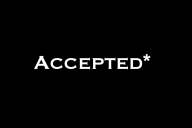You have /5 articles left.
Sign up for a free account or log in.
Over the course of the last decade, more and more colleges and universities have found their way to a muddled quasi apology to Indian Country through land acknowledgment ceremonies -- symbolic gatherings where a college admits that its campus is located on the stolen homeland of Native Americans. While certainly well intentioned, we might do well to ask, what purpose do these ceremonies serve? Too often they appear more as balm for tortured liberal souls than actual outreach to Native Americans.
Like many other higher education “diversity” initiatives, these ceremonies also too often promote symbol over substance. Acknowledging that your campus sits on Indian land while doing nothing tangible for Native communities and students is tantamount to apologizing for stealing my debit card while continuing to spend my money. To be meaningful and worthwhile, any land acknowledgment ceremony must be accompanied by a determined -- and specific -- commitment to Native American students and faculty members.
American higher education has failed Indian Country again and again. The numbers tell part of the story: recent data from the Postsecondary Policy Institute shows that less than 10 percent of Native Americans receive their associate degree, and only 16 percent attain a bachelor's degree or higher. Just 19 percent of Native Americans aged 18 to 24 are enrolled in a college program, compared to 41 percent of the overall population. And of those Native students who do attend college, only “41 percent of first-time, full-time Native American students attending four-year institutions beginning in 2012 graduated within six years, compared to 62 percent for all students.”
Of equal concern, those already anemic numbers are actually dropping, with recent data showing “daunting trends,” in the words of the Cherokee Phoenix newspaper, as the number of Native Americans between the ages of 25 and 29 holding an associate or bachelor’s degrees decreased from 30 percent in 2000 to 27 percent in recent years. Clearly, something is not working.
A Full Commitment Required
The commitment of colleges and universities to Native American students must include critically examining their curriculum and the campus itself. Ask yourself: Are the flags of any Native nations located within your state flying in your student union’s international hall? Does the “inclusion” or “diversity” team on your campus understand that multiculturalism must be more than a Black/white paradigm? Has the institution provided funds, encouragement and assistance to establishing, strengthening or maintaining a thriving Native American student group? Do your Native students feel seen and heard?
The American Indian College Fund reminds us that “invisibility is in essence the modern form of racism used against Native Americans. It is this invisibility that leads to a college access and completion crisis among Native American students.” Demanding that Native students be visible will force educators to swim against the tide, since policy makers and educations too often simply ignore Native Americans. “Because Native Americans (both American Indians and Alaska Natives) make up only 1 percent of the U.S. undergraduate population and less than 1 percent of the graduate population,” the Postsecondary Policy Institute notes, “these students are often left out of postsecondary research and data reporting due to small sample size.”
Sadly, “left out” also describes the curriculum of most colleges and universities when it comes to Native Americans. A full commitment to Native students means they will experience their culture in our arts programs, that they will hear the voices of their community in our English departments, that the ancestral wisdom of their nation will have a seat at the table in our sustainable development programs and that the story of their people is more than an afterthought in our history departments.
To be successful, institutions of higher education must also commit to Native students before they arrive on campus. In the 2017-18 academic year, Native Americans had the lowest high school graduation rate of any ethnicity with 74 percent -- well below the national average of 85 percent. Before we can begin to worry about keeping Native American students on our campuses, we must first get them here. Higher education institutions should be reaching out to and partnering with K-12 schools in Indian Country.
That said, it is certainly not a call for colleges to appear in Indian Country with ready-made plans and programs to implement -- enough white saviors have already arrived in this way. Institutional leaders and educators should develop relationships with tribal leaders and educators and ask where and how we might best be a resource. Listening to the voices of Native American communities is important for higher education, because, as Bryan McKinley Jones Brayboy, Jessica A. Solyom and Angelina E. Castagno have written in Indigenous People in Higher Education, “Despite frequent rhetoric touting commitment to diversity, many postsecondary leaders lack general knowledge of Native people’s rich, complex history and modern-day sociocultural needs and desires.”
The commitment to Native American students must come, hand in glove, with one for and to Native American faculty. Native American scholars make up a paltry 0.5 percent of college faculty and, like Indigenous students, “are often invisible in national studies and data-gathering efforts.” A recent study of Native faculty found that “not only are Native Americans underrepresented among faculty … they are not represented at all in any rank in the top 50 departments of each of five disciplines -- mathematics, mechanical engineering, economics, political science, and sociology.” Native students need and deserve Native mentors and models, but higher educational institutions in America fail miserably at providing them.
Studies have shown that mentoring is “essential in helping Native American and Latino students navigate an unfamiliar academic system that is dominated by majority culture and practices,” and yet few mentors are available at the collegiate level for these students. The University of Minnesota increased its six-year graduation rate for Native American students from 27 percent to 69 percent between 2008 and 2018 in part by committing to a sense of community through Native staff and “a campus center created explicitly to serve Native students,” according to the Hechinger Report.
Moreover, Native faculty are needed for mentorship and connection, and it has been documented that “Indigenous faculty interact more frequently with students than other faculty, even after controlling for disciplinary differences and institutional type.” Colleges and universities must commit to hiring, supporting and retaining Native faculty, and this commitment must be more than words. In the current climate, Native faculty “frequently describe feeling isolated and lonely -- experiencing visibility, however briefly, only when it brings accolades or legitimacy to particular institutional initiatives,” the authors of Indigenous People in Higher Education further note.
In conclusion, I do not mean to argue that that land acknowledgment ceremonies are useless; they can be powerful reminders of privilege, history and loss. To be more than maudlin, though, they must be tethered to institutional policies, commitments and dispositions that will assure a safe and welcoming environment for Native students, faculty and staff. Acknowledging loss without making amends is cruel, even if it is sponsored by the campus diversity committee. Instead of a land acknowledgment ceremony, higher education institutions should hold commitment ceremonies in which they publicly commit themselves to the support and advancement of Native people. Without such tangible efforts, these ceremonies are little more than virtue signaling at best, racist hypocrisy at worst.
Unraveling the horrific legacy of colonialism among our educational institutions will require more than symbols and good intentions -- it will take hard work and heavy lifting. Colleges and universities have no business inviting Native people to such ceremonies on campuses where they are otherwise unseen, unwelcome or unsafe. The real test is not whether our institutions are willing to acknowledge the sins of the past, but whether they are willing to commit to avoiding those sins in the future.




